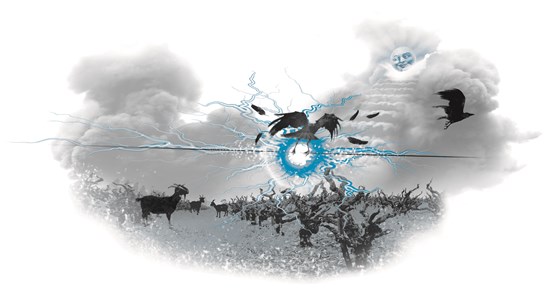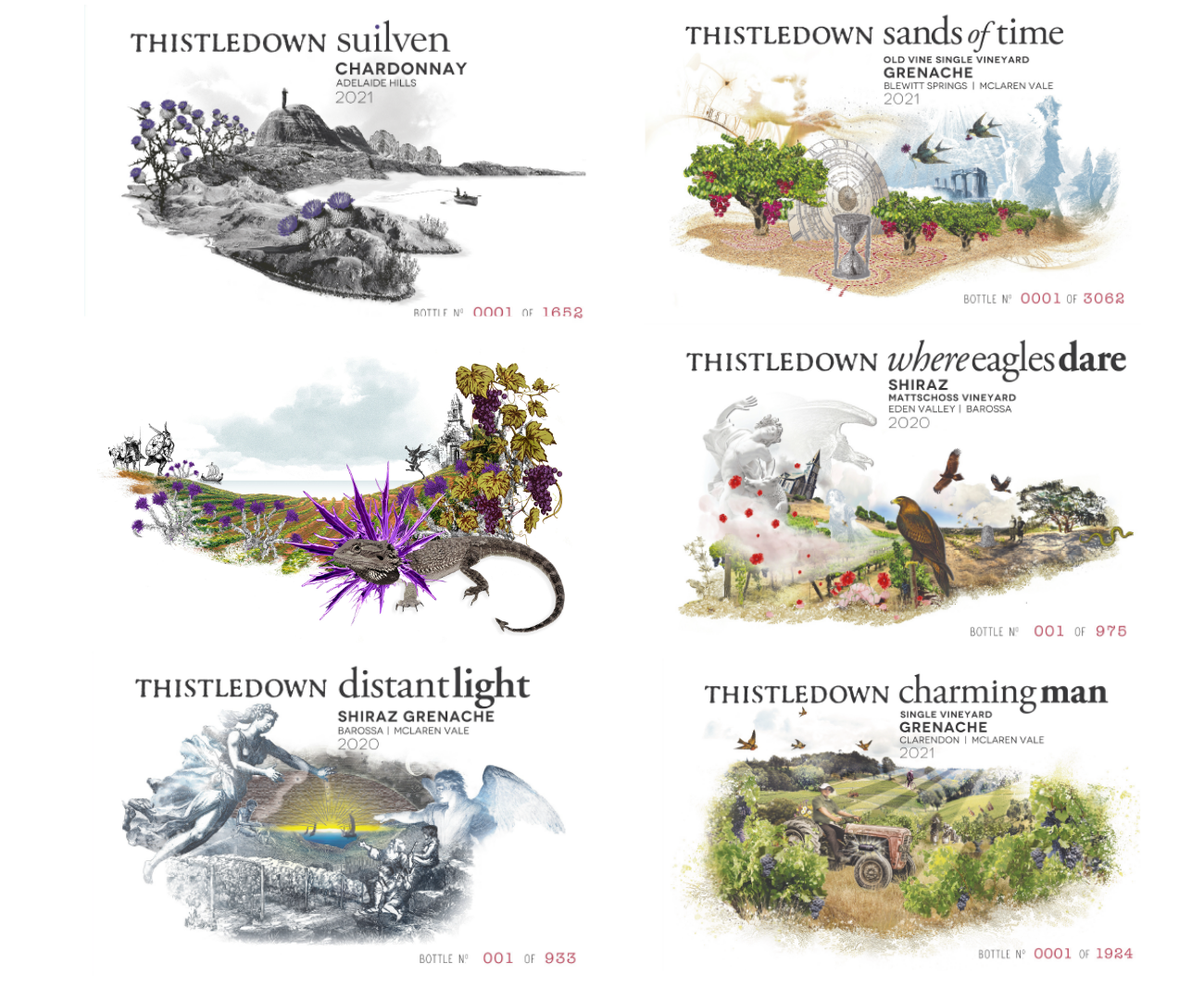
Stories Behind the Label | by Giles Cooke MW
With the fast approaching and much anticipated Australia Trade Tasting, taking place on Thursday 7 April, we are putting some (not only) Australian stories behind the label in the headlight... Here is a beautifully captured summary from our very own Giles Cooke MW with a few stories behind the label at Thistledown.
This rich history is inextricably woven into the landscapes that we work in and how those growers we work with, experience their environment. The love that goes into each bottle is only a fitting recompense for the hardship and thankless toil that many of our growers have endured over the decades. As the wine tumbles into your glass, if you only sense a fraction of this history, environment, passion and pride, we will have done our job.
Since 1793, when John Macarthur established the first vineyard in Australia, Scots have played an important role in the development of wine in Australia. The more renowned figure of James Busby was also a Scot, hailing from Edinburgh where Giles was raised and where both Giles and Fergal now live for part of the year.
The name brings together the Scottish roots and our Australian future.
It refers to the delicate, pink core of the otherwise, robust, spiky thistle.
The thistle belongs to the same family as the artichoke. Both share the same, robust external structure and as anyone who has eaten an artichoke will attest, you can peel off each layer to eventually reveal the sweet core. Likewise, the thistle with its spiky outer layer gives way to a core that is delicate, even pretty.
Our wines share similarities with the thistle. We make them in what is a superficially robust climate and they can appear bold initially but they are also multi-layered and complex. Allow our wines to open up and you can observe the various layers of flavour and texture before reaching the delicate, pretty core of fruit that underpins them all. In summary, Thistledown is all about finding beauty in even the harshest of environments.
That we and our growers we are just custodians for these old vineyards is something that plays on our minds. The resolute, timeless stoicism of the vines in the face of extreme climatic events contrasts with the seeming frailty of us and our egos at times. I’m reminded of this by the poem, Ozymandias, by Percy Byshe Shelley. In the poem, a traveller comes upon the ruins of an old temple upon which are inscribed the words “look upon my works ye mighty and despair”. That such a statement of hubris is contrasted by the fact that the temple was now dust sheds light on just how fleeting and how futile man’s attempts to control and to slow down nature are.
The beautiful sandy vineyard of Sue Trott seemed best suited to tell such a tale and so the Sands of Time label does so in detail. The vines themselves are hung with rubies, suggesting the value that we place on these remarkable grapes. Mother nature blows sands in act that reflects how the sands of Blewitt Springs arrived there. A sun dial and a sand-timer add further detail to the story of time and nature. To the right of the label stands a stone outcrop: the mclaren vale region was originally settled by a number of people from Devon, England who presumably would have loved its rolling hills and seaside location. Much of Giles family hails from Devon and summer holidays were spent there. The rock depicted is the Parson & Clerk which stands on the South Devon coastline near Teignmouth, now pretty much eroded just like Ozymandias.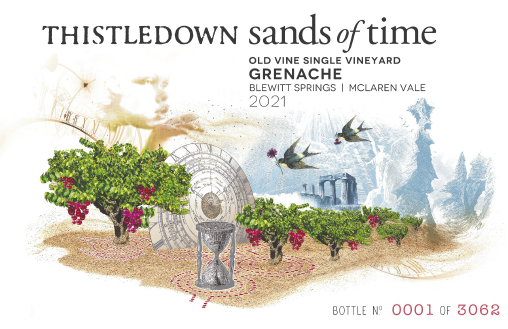
This Charming Man refers to Bernard Smart, the veteran grower of a beautiful vineyard on Brooks Rd in the Clarendon sub-region of McLaren Vale. Bernard’s family, along with the Mobsleys, have been instrumental in many of the best vineyard plantings in the vale, including that of Sue Trott’s home block.
What is remarkable is that, for much of the life of the vineyard, few people have wanted his Grenache (or green ash as he calls it) Until the 1950s, Grenache was the most widely planted variety in Australia but it went out of fashion and plantings declined. Vine pull schemes removed some of the oldest and best sites but Bernard Smart carried on, inviting Italian and Greek families from Melbourne to pick his grapes for home wine making.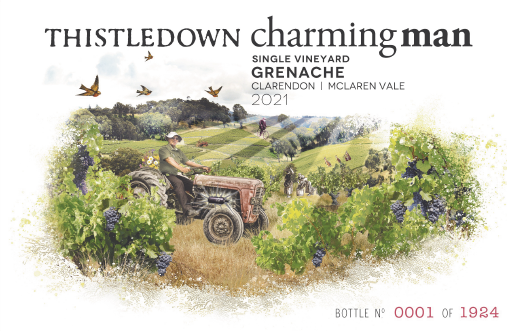
It has only been in the 2010s that there has been a re-awakening of interest in Grenache and now his fruit is much sought after. That Bernard is still around to see how well he is thought of is beautiful to see.
We love Bernard and his beautiful site and this label is testament to his character. Depicted in slightly younger days on his tractor, the label details the families that used to visit to pick grapes and has his tractor running on port – alluding to the fact that demand for Grenache was, in the past, fuelled by the demand for fortified wines.
Suilven is our top chardonnay and as such we wanted to have a name that reflected its position as the pinnacle or summit of our white winemaking. None of the generic Gaelic terms for summit or pinnacle sounded right and so we thought about actual peaks in Scotland.
When I was about 15/16, I used to fish with friends up in the North West Sutherland region of Scotland. It is a remote, wild place with barren moors and foreboding hills and mountains. We fished in the shadow of Cul Mor, Stac Polaidh and Suilven but it was Suilven that always seemed to be there. Meaning “notched hill” Suilven has an unusual silhouette and its presence seemed to follow us wherever we went.
We never climbed Suilven and, almost subconsciously, Suilven became a symbol of something yet to be attained, something within sight but out of reach, the ultimate destination. We think that it is a fitting name for our best Chardonnay.
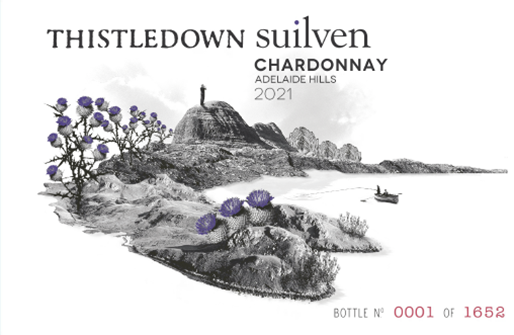
Thorny Devil was originally sourced from a vineyard in the southern edges of the Barossa, around the town of Lyndoch. Old vine and dry-grown, this site produced delicious, crunchy Grenache with some typically Barossan “grunt”
On one visit we came across a lizard which was sitting patiently on one of the vines. Allowing us to get quite close, we saw that its body was covered in little spikes, or thorns. The name of this lizard was the Thorny Devil.
However, the last thing we wanted to do was to create another Australian wine with a “critter” on it…..and so we got thinking. And that’s when we came upon the story of how the thistle became the emblem of Scotland.
Dating back to the Battle of Largs in 1267, the story goes that the Vikings were trying to capture one of the Western Isles of Scotland. In order to surprise the Scots, the Vikings landed at night and took off their footwear in order to make as little noise as possible.
Their plan backfired however because, between the beach and where the Scots were camped, was a field of thistles. Treading on the thistles with their bare feet, they screamed and shouted, alerting the Scots who repelled them. The passive but heroic efforts of the thistle were subsequently rewarded by being made the country’s emblem. Given Thistledown’s inspiration, this version of the story seems so much more apt.
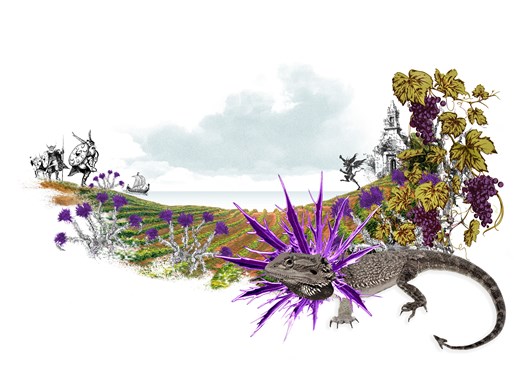
As with many of our single vineyard wines, it is the place, rather than anything from our past, that inspires the story of the label.
Joel Mattschoss’ hauntingly beautiful vineyard was formerly the site of a gold mine and its challenging terrain would encourage only the bravest souls to take it on for viticulture.
Perched high above the Barossa, the Eden Valley can be a precarious but highly rewarding place in which to grow grapes. This single vineyard, at 550m above sea level is home to the majestic wedgetail eagle, the soils composed of pink quartz and ironstone, provide a formidable substrate in which the vines takes a tenuous hold.
Many is the morning where my only companion, when walking the vineyard, is a wedgetail eagle and so the name, coined by the famous film, came to be.
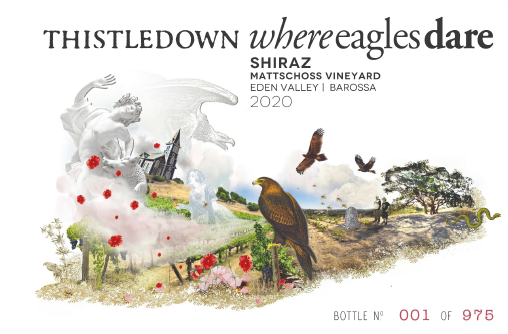
At its very essence, The Distant Light is what keeps many of us moving forward. It is the faint, twinkling lights of a harbour, gently beckoning home weary fishermen after time at sea. It is the comforting glow of a wood fire burning post a long, winter’s walk. It is the dazzling, azure blue of the ocean, glimpsed through gullies after a long drive to the coast. It is the streak of light on the horizon, viewed from a hilltop vineyard, ushering in a new dawn. It is hope.
The first wine was blended in mid-2019 and it was bottled, unrestricted by a label, to be kept and assessed at a later date. It was, without a doubt, the longest and most detailed blending experience we have conducted, and one filled with the self-doubt of anyone experimenting with their future.
Over the years, we’re grateful to have gained a reputation for making some of Australia’s most delicious Grenache, but when Thistledown first started, our focus was to produce a contemporary iteration of classic Australian wine. A wine that expressed the textural individuality of the country rather than sheer power. In the following years we have worked with so many different vineyards and have gradually worked out which resonates for us.
Though there is a common thread between all of them, working out whether any will coalesce is more problematic. Will they, together, become greater than their constituent parts? Will the increased quality and balance be understood by a market that primarily values and understands regions and varieties?
Through our single vineyard and Advance Release wines, we have learned a lot. Not constrained by conventional wisdom, we have questioned, experimented and tasted.
We love the individual expressions of vineyard that we have so faithfully expressed but ultimately our grail has been a profound balance.
Tasting this wine, we asked ourselves “have we achieved balance?” Our answer was yes. Those looking for the bigger-is-better cues will not find it in The Distant Light. It was never going to be about that, but what it is about is being able to see the quality and quantity of the detail but in a form that is seamless.
The wine blends Shiraz from Ebenezer and Eden Valley with Grenache from Blewitt Springs and Clarendon. This unconventional blend, echoing and empathising with the thought processes that have created many of the great Australian wines of the past, will challenge as many as it delights.
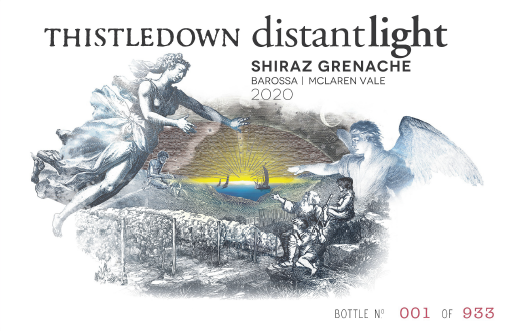
Some of the earliest and happiest memories of wine that both Fergal and I have are of tasting wines in the Southern Rhone and Northern Spain. There, on the gravelly, boulder-strewn vineyards of La Crau or on the precipitous slopes of Priorat, Grenache (or Garnacha) is the king.
However, when treated poorly, when yields are too high, Grenache produces alcoholic, mediocre wines which, in some regions have meant that Grenache has not reached its full potential.
Passionate about the variety, we could see, from our extensive travels in Australia, that the country had an amazing resource of old vine Grenache that was not being fully utilised. Either used for fortifieds or in blends, the beauty was not being realised.
We set out to champion the variety and to produce a wine that would convince the world that McLaren Vale Grenache, particularly old vine, dry grown on sand, can be profound.
We found parallels between our own wanderings and that of Grenache and so we called the wine The Vagabond.
The label colourfully depicts an old vine Grenache vineyard, splattered with the Spanish coloured juice while Salvador Dali looks on. Meanwhile, stage left, Giles & Fergal enter the picture coming to the rescue of Grenache on horseback.
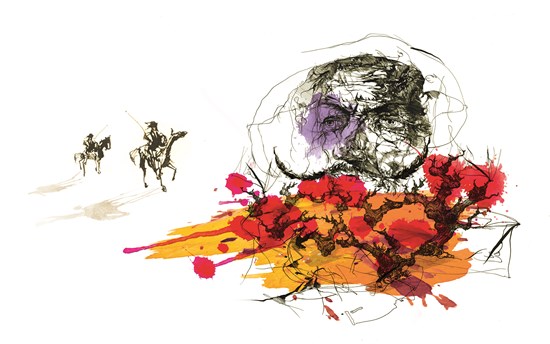
In November 2016, we visited an old vineyard on the Seaview end of Chapel Hill Road. Overlooking the Onkaparinga Gorge, it was a vineyard with a remarkable history. 13 rows of small, bush vine Grenache which had, for much of their lives, been dry grown. 12 rows of young bush vines. Overhead, electricity cables.
It turns out that some 5-6 years previously, there had been a power cut and while the power was off, a bird perched on the lines. Sadly, when the power came back on, the bird was electrocuted and fell to the ground, setting fire to tne half of the vineyard! We decided immediately that a vineyard with such a story was for us and we made our first wine from it in March 2017, naming it She’s Electric after the Oasis song.
The label depicts the unfortunate bird in an electric explosion – the energy and current – being mirrored in the more lifted style of the wine. The label also depicts the wild goats that roam the outskirts of the vineyard as well as the steps to heaven cloud formation that appeared on the morning of our first pick there.
